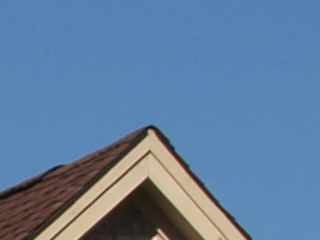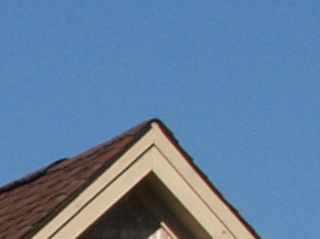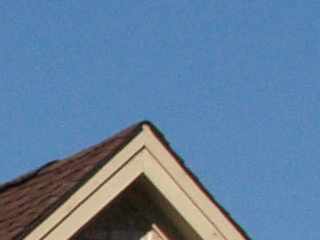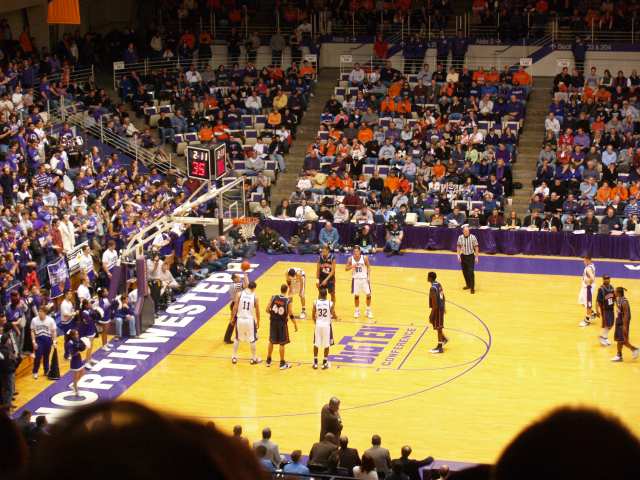Harry's E300 stuff
One shortcoming of the Olympus E300 has been its sensor performance at higher ISO ratings. It could be better, but I can work around it most of the time.
|
Harry's E300 stuff One shortcoming of the Olympus E300 has been its sensor performance at higher ISO ratings. It could be better, but I can work around it most of the time. |
I took a photo at the various ISO values available on an Olumpus E300 using
the following subject..
The original picture is 3264x2448 pixels, but I've shrunken it to 320x240 here.
 |
Original Images (compressed to 1 Meg) |
| From each photo, I cropped out the small area
shown in red above.The size of the crop was 320x240 and they appear below. |
|
| 1. ISO 100 | ISO 200 |
 |
 |
| 3. ISO 400 | ISO 800 |
 |
|
| 4. ISO 1600 | |
 |
|
|
Starting at ISO 400, there is slight noise in the blue sky. It's quite evident at ISO 1600. If the above crops are printed, you can see the difference in a 5x7 print. However, all of this is at 1:1 magnification. In other words, that would be looking at a print 50 inches wide. Printed at 8x10, most people would not see it at ISO 800 or lower. |
|
Noise reduction Software?
|
|
ISO 1600 Before: |
ISO 1600 After: |
| It's just a one-button click process and works well, but there are tradeoffs. The same process applied to the original photo looks like this and is not as good as the samples taken at ISO 200 and lower. | |
|
And here are some unprocessed pictures right out of the E300. No adjustments - just sized smaller to fit on a web page. |
|
|
ISO 400 1/4 sec f3.5 - Shanghai at night. Camera on a windowsill.
|
|
|
ISO 400 1/50 sec f4.7 A musician in Nanjing.
|
|
|
ISO 800 1/100 sec F5/6. A theme park show in Hanzhou, China.
|
|
ISO 800.1/30 second f5.6 - Ryan Arena. Shutter speed should have been higher.  |
|
November 2, 2006